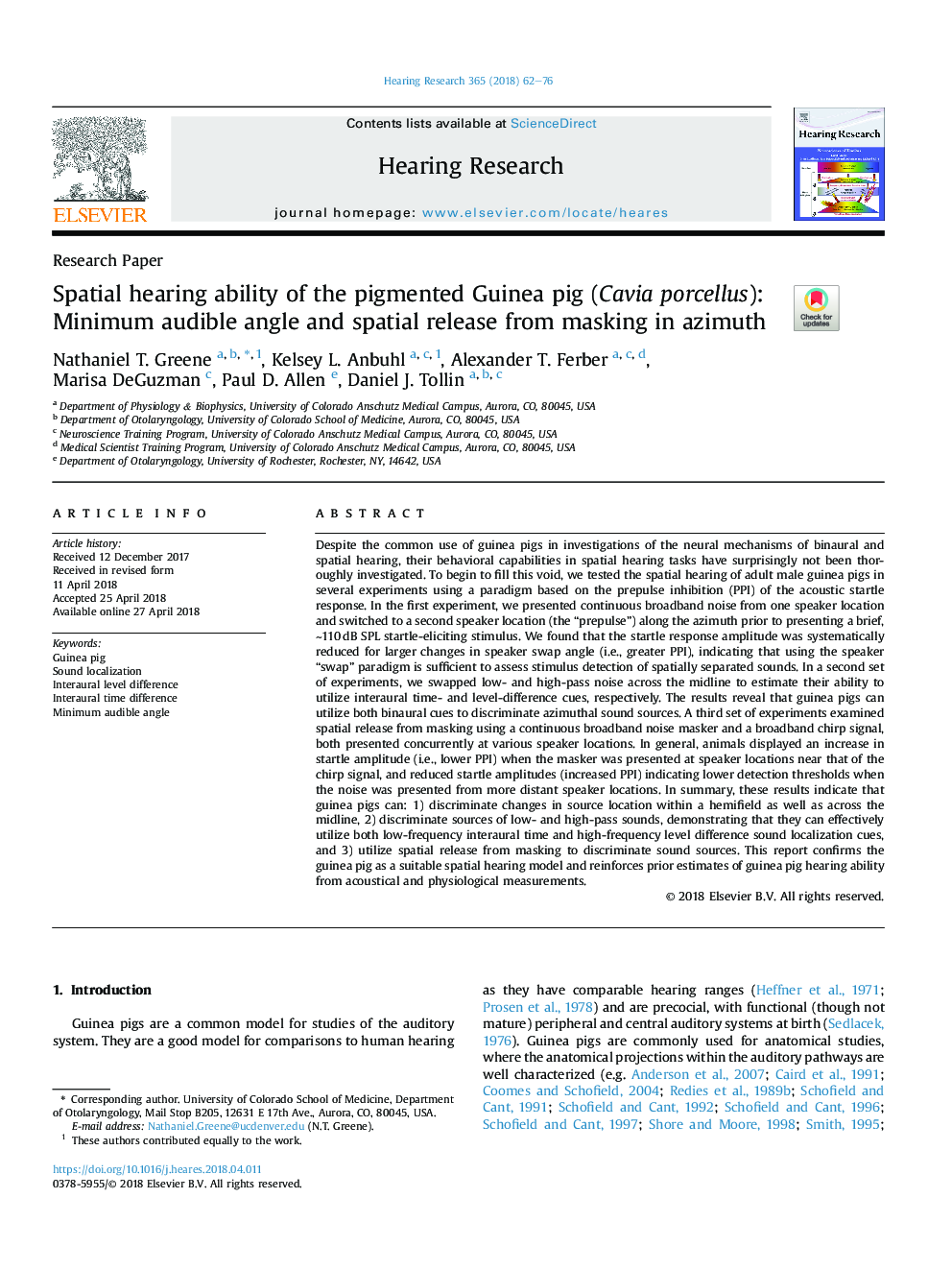| کد مقاله | کد نشریه | سال انتشار | مقاله انگلیسی | نسخه تمام متن |
|---|---|---|---|---|
| 8842338 | 1615535 | 2018 | 15 صفحه PDF | دانلود رایگان |
عنوان انگلیسی مقاله ISI
Spatial hearing ability of the pigmented Guinea pig (Cavia porcellus): Minimum audible angle and spatial release from masking in azimuth
دانلود مقاله + سفارش ترجمه
دانلود مقاله ISI انگلیسی
رایگان برای ایرانیان
کلمات کلیدی
موضوعات مرتبط
علوم زیستی و بیوفناوری
علم عصب شناسی
سیستم های حسی
پیش نمایش صفحه اول مقاله

چکیده انگلیسی
Despite the common use of guinea pigs in investigations of the neural mechanisms of binaural and spatial hearing, their behavioral capabilities in spatial hearing tasks have surprisingly not been thoroughly investigated. To begin to fill this void, we tested the spatial hearing of adult male guinea pigs in several experiments using a paradigm based on the prepulse inhibition (PPI) of the acoustic startle response. In the first experiment, we presented continuous broadband noise from one speaker location and switched to a second speaker location (the “prepulse”) along the azimuth prior to presenting a brief, â¼110â¯dB SPL startle-eliciting stimulus. We found that the startle response amplitude was systematically reduced for larger changes in speaker swap angle (i.e., greater PPI), indicating that using the speaker “swap” paradigm is sufficient to assess stimulus detection of spatially separated sounds. In a second set of experiments, we swapped low- and high-pass noise across the midline to estimate their ability to utilize interaural time- and level-difference cues, respectively. The results reveal that guinea pigs can utilize both binaural cues to discriminate azimuthal sound sources. A third set of experiments examined spatial release from masking using a continuous broadband noise masker and a broadband chirp signal, both presented concurrently at various speaker locations. In general, animals displayed an increase in startle amplitude (i.e., lower PPI) when the masker was presented at speaker locations near that of the chirp signal, and reduced startle amplitudes (increased PPI) indicating lower detection thresholds when the noise was presented from more distant speaker locations. In summary, these results indicate that guinea pigs can: 1) discriminate changes in source location within a hemifield as well as across the midline, 2) discriminate sources of low- and high-pass sounds, demonstrating that they can effectively utilize both low-frequency interaural time and high-frequency level difference sound localization cues, and 3) utilize spatial release from masking to discriminate sound sources. This report confirms the guinea pig as a suitable spatial hearing model and reinforces prior estimates of guinea pig hearing ability from acoustical and physiological measurements.
ناشر
Database: Elsevier - ScienceDirect (ساینس دایرکت)
Journal: Hearing Research - Volume 365, August 2018, Pages 62-76
Journal: Hearing Research - Volume 365, August 2018, Pages 62-76
نویسندگان
Nathaniel T. Greene, Kelsey L. Anbuhl, Alexander T. Ferber, Marisa DeGuzman, Paul D. Allen, Daniel J. Tollin,